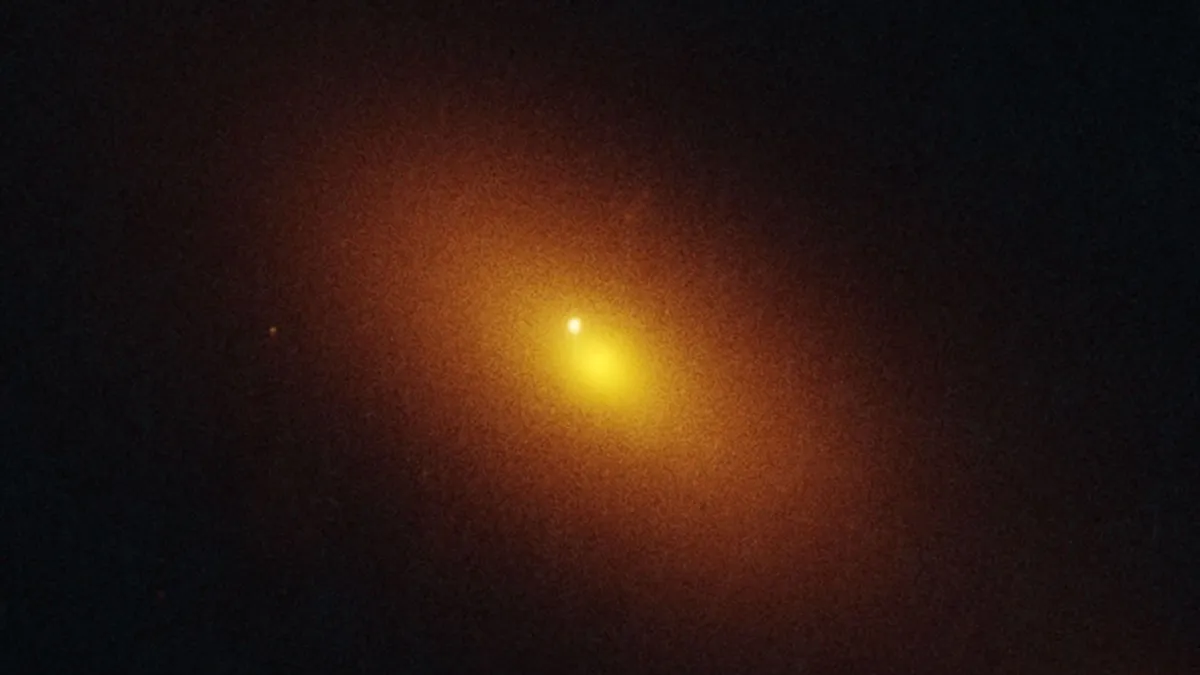
A recent discovery by astronomers has unveiled a rogue supermassive black hole far from the center of its home galaxy, providing unprecedented direct evidence of such cosmic entities in action. The event, named AT2024tvd, occurred approximately 600 million light-years away from Earth and has significant implications for our understanding of tidal disruption events (TDEs).
This particular black hole weighs about a million times more than our sun, yet it is not located at the typical central position within its host galaxy where supermassive black holes usually reside. Instead, it marks the first documented case of an off-center TDE, where a star is violently stretched and torn apart—commonly referred to as being "spaghettified"—by the immense gravitational pull of a black hole. According to Yuhan Yao, a postdoctoral fellow in the department of astronomy at the University of California, Berkeley, this groundbreaking find paves the way for the identification of additional rogue TDEs.
The sudden and bright flare associated with AT2024tvd was detected by the Zwicky Transient Facility, an advanced sky-surveying optical camera located at the Palomar Observatory near San Diego. Subsequent observations made by the Hubble Space Telescope revealed that this rogue black hole is situated approximately 2,600 light-years from the galaxy's core, where a much larger black hole—estimated to be 100 million times the mass of the sun—resides. The existence of two massive black holes within a single galaxy is not surprising to astronomers, who note that most large galaxies typically house at least one supermassive black hole at their center.
Galaxies often collide and merge over cosmic timescales, leading astronomers to theorize that some galaxies may contain multiple black holes until they eventually collide and combine into a single, larger black hole. These hidden giants usually remain dormant, only revealing themselves during instances of consuming nearby stars or gas clouds, which results in a brief but intense burst of light. Capturing these black holes in action is exceedingly rare; astronomers estimate that a massive black hole consumes a star roughly once every 30,000 years.
Ryan Chornock, a professor of astronomy at the University of California, Berkeley, emphasized that these rare events hold great potential for revealing the presence of massive black holes that would otherwise go undetected. While the notion of two supermassive black holes coexisting in a galaxy is not surprising, the fact that one of them is not gravitationally bound to the galaxy's core raises compelling questions about its origin. One theory suggests that this rogue black hole may have been ejected during a violent interaction involving multiple black holes. Alternatively, it might have originated from a smaller galaxy that merged with the larger one over a billion years ago.
If this rogue black hole is indeed a remnant of a past merger, it could eventually drift toward the galaxy's center and merge with the more massive black hole. Such a merger would produce powerful gravitational waves—ripples in spacetime that could be detected by future space-based observatories like the Laser Interferometer Space Antenna (LISA), which is scheduled for launch in 2035. This potential for uncovering the mysteries of the cosmos further underscores the significance of the discovery of AT2024tvd and the ongoing quest to understand the universe’s most enigmatic phenomena.